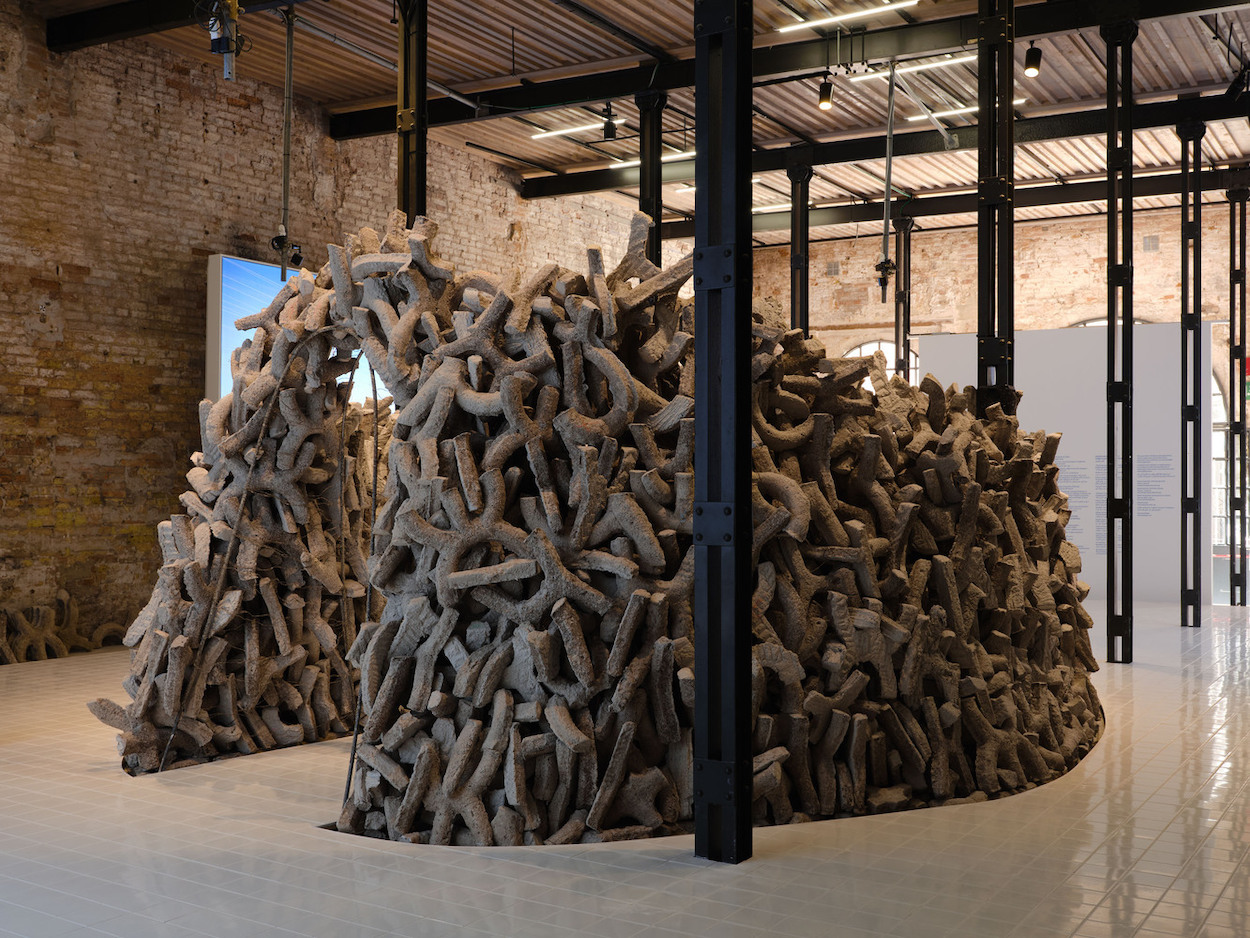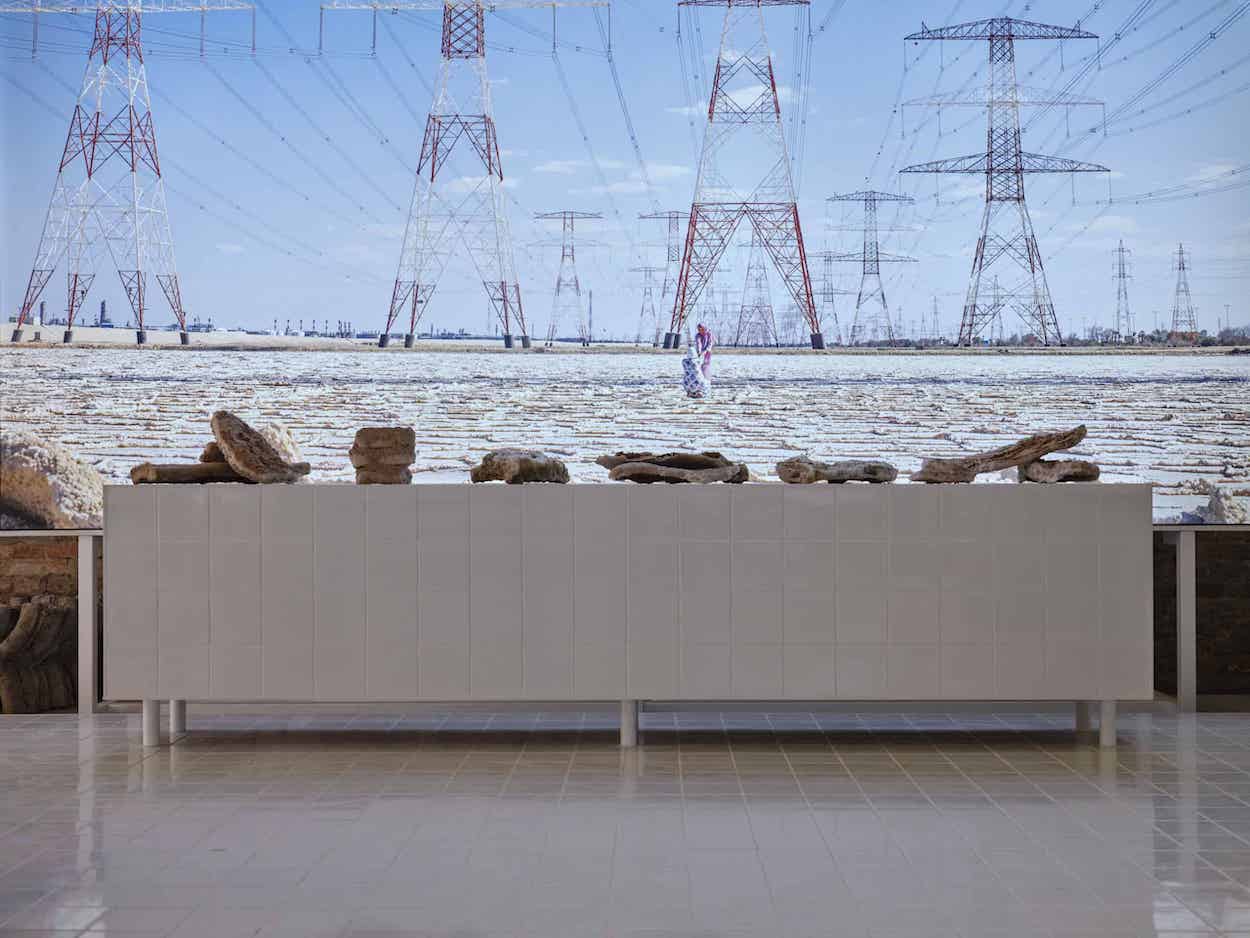In 2019, the Bill and Melinda Gates Foundation issued a report stating that the world will need to build the equivalent of one New York City every month for the next four decades in order to accommodate projected population growth. This statistic became critical for curators Wael Al Awar and Kenichi Teramoto, who spearheaded the United Arab Emirates’ pavilion at this year’s Venice Architecture Biennale in response to the event’s theme of “How will we live together?”
Knowing that cement accounts for eight percent of global carbon emissions and the human population is projected to reach 10 billion by 2060, the duo investigated how mineral compounds found in the UAE’s Sabkha (salt flats), which were recently nominated as a UNESCO World Heritage Site, could help develop more sustainable building materials. What makes cement so harmful lies in the chemical makeup of limestone, which emits carbon dioxide and lime—the binder or glue that holds the sand, gravel, cement, and water together to form concrete—when heated. Finding an alternative glue would help drastically reduce the material’s carbon emissions.
The team found a solution in magnesium oxide, which acts as the binding material in karshif, a salt-and-mud mixture that was the primary building material found in traditional architecture throughout Egypt’s ancient Siwa Oasis. The best place to source magnesium oxide, according to Al Awar, is the “reject block drying of desalination water”—a process that the team conducted locally in Venice. When they used magnesium oxide as a binding agent in cement, they found the newly created concrete blocks actually absorb carbon dioxide to gain structural strength. The team then constructed the pavilion’s prototype structure from these brine-based blocks, which joins an immersive soundscape and large-scale images of the Sabkhas created by Emirati artist Farah Al Qasimi.
The pavilion, called “Wetland,” received the prestigious Golden Lion for Best National Participation at this year’s edition. “[Wetland] encourages us to think about the relationship between waste and production at both the local and global scales, and opens new construction possibilities between craft and high technology,” the jury, which includes Kazuyo Sejima, Sandra Barclay, Lamia Joreige, Lesley Lokko, and Luca Molinari, said in a statement. While much work remains in assessing the material’s long-term feasibility, especially when used in construction, the UAE’s findings are sure to pave the way (no pun intended) toward a cleaner building industry.


